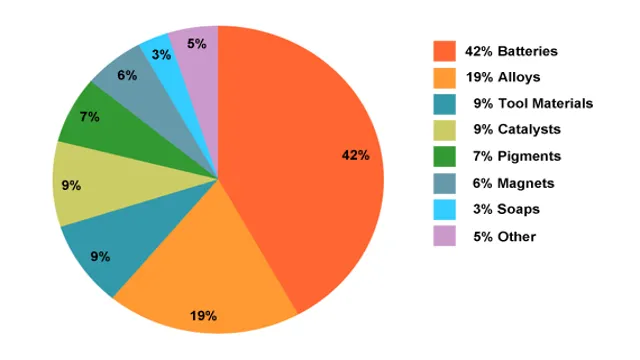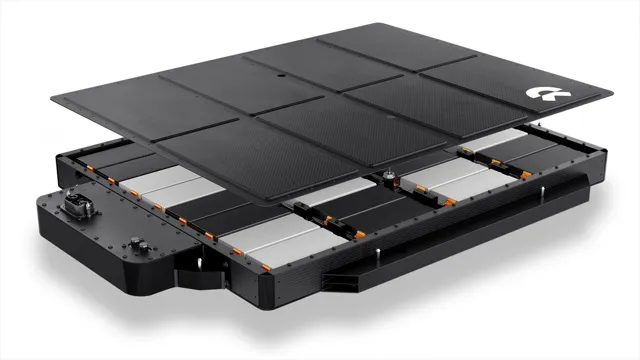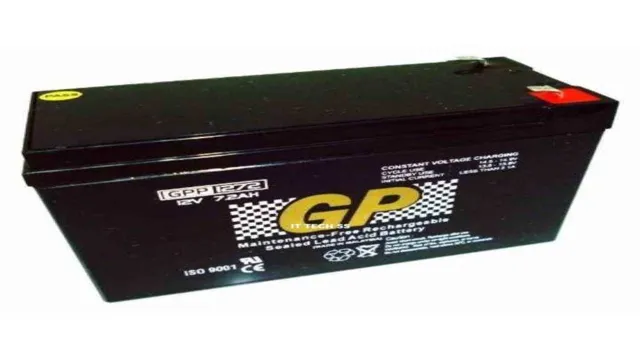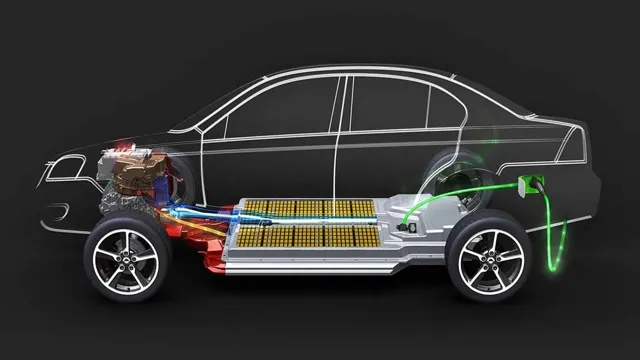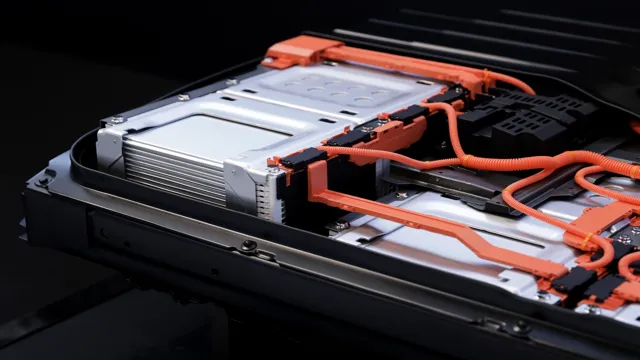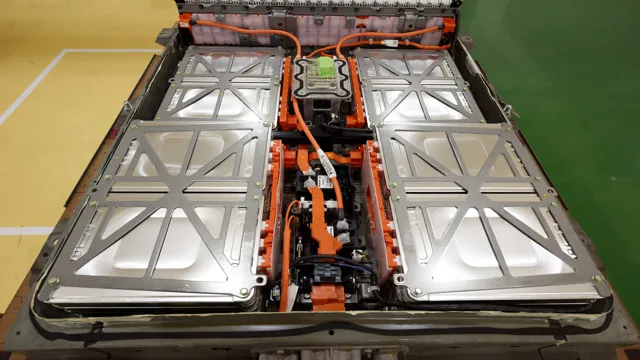The Cobalt Conundrum: Unpacking the Role of Cobalt in Electric Car Batteries
Electric cars have become increasingly popular in recent years as people look for ways to reduce their carbon footprint and save money on gas. These vehicles are powered by rechargeable batteries that are much different from their traditional lead-acid counterparts. But, does electric car battery use cobalt? That’s a question that might be on your mind.
As it turns out, many electric car batteries do contain cobalt. The element is an essential component in the lithium-ion batteries that power most of today’s electric vehicles. Why is cobalt so important, and are there alternatives to using this metal in electric car batteries? We’ll explore these questions and more in this article.
What is Cobalt?
Yes, electric car batteries do use cobalt, among other materials. Cobalt is an essential component in lithium-ion batteries, which power most electric vehicles (EVs) and also many electronic devices, including smartphones and laptops. The metal has some unique properties that make it useful for battery applications, including its ability to store and release energy efficiently and its thermal stability.
However, the reliance on cobalt has raised some environmental and ethical concerns, as many of the world’s cobalt reserves are concentrated in unstable or conflict-prone regions, and mining the metal can have destructive impacts on local ecosystems and communities. To address these issues, battery manufacturers and EV companies are exploring ways to reduce or eliminate the use of cobalt and other critical materials, such as through the development of new battery chemistries and recycling programs. Despite these challenges, the demand for electric vehicles and clean energy storage is only expected to grow in the coming years, making cobalt and other key materials even more critical to the transition towards a low-carbon economy.
Definition and Properties
Cobalt is a naturally occurring element with atomic number 27 and symbol Co. It is a lustrous and hard metal with a silver-gray appearance and belongs to the transition metals group. Cobalt is widely used in many industrial applications due to its unique properties, including excellent magnetic properties, high melting point, corrosion-resistant, and strong enough to maintain its shape and form at high temperatures.
Cobalt is also an essential mineral and nutrient for humans and animals, being a crucial component of vitamin B1 Despite its usefulness, cobalt can be a toxic substance in high doses, having adverse effects on the human body, including heart and lung problems. Overall, cobalt plays an important role in modern society and is utilized in many critical fields, including aerospace, electronics, medicine, and energy.
Where is it Found?
Cobalt is a chemical element that is commonly found in the Earth’s crust. It is a hard, lustrous, silver-grey metal that is naturally occurring in a variety of minerals such as cobaltite, erythrite, and skutterudite. Cobalt is also found in a range of ores including nickel-cobalt-copper, copper-cobalt, and iron-cobalt.
It is typically extracted through mining, and its most significant producers include the Democratic Republic of Congo, Zambia, and Russia. The metal is known for its uses in high-performance alloys, such as those used in aircraft engines and power generation turbines. It is also a vital component in batteries, particularly those used in electric vehicles.
Additionally, it has agricultural and medical applications, such as being utilized as a nutrient in livestock feed and a tracer element in medical imaging. Overall, cobalt plays a crucial role in many industries and provides essential contributions to modern society.
The Role of Cobalt in Batteries
Are electric car batteries use cobalt? Yes, they are. Cobalt is an essential element in the production of the lithium-ion batteries used in electric cars. It is a key component in the cathode of these batteries, which is the positive electrode that stores energy.
The reason cobalt is so valuable in lithium-ion batteries is because it stabilizes the structure of the cathode and helps to prevent oxidation, which can lead to a decrease in the battery’s performance over time. It also enables the battery to deliver more power and last longer on a single charge. However, the mining of cobalt has come under scrutiny due to unethical practices and labor violations in certain regions where it is sourced.
As a result, many companies are working to reduce or eliminate the amount of cobalt used in their batteries, while also developing more sustainable and ethical ways to source it.
How is Cobalt Used in Batteries?
Cobalt is an essential component of the rechargeable lithium-ion batteries that power our mobile devices, electric vehicles, and renewable energy systems. It plays a key role in improving the energy density, stability, and lifespan of these batteries. Cobalt is primarily used as a cathode material, alongside other metals like nickel and manganese, to create a stable and balanced electrochemical reaction.
The unique properties of cobalt allow it to efficiently transfer electrons between the anode and cathode, leading to faster charging and discharging cycles. Cobalt also helps to prevent unwanted side reactions, such as the formation of unwanted lithium metal dendrites, which can cause short circuits and reduce battery performance over time. Despite its importance, there are concerns about the ethical and environmental impacts of cobalt mining, highlighting the need for more sustainable and responsible supply chains in the battery industry.
The Importance of Cobalt in Battery Performance
Cobalt is an incredibly important element when it comes to the performance of batteries. In fact, it is often referred to as the “gold standard” for battery performance. Cobalt is typically used in the cathode of lithium-ion batteries, where it plays a key role in improving the battery’s energy density and overall performance.
This means that batteries with higher levels of cobalt are generally more efficient and longer-lasting. However, cobalt is also relatively expensive and can have negative environmental impacts when mined and processed. As a result, there has been a push in recent years to find alternative materials that can provide similar benefits without the drawbacks associated with cobalt.
Despite this, cobalt continues to be a crucial component in many battery technologies and will likely remain so for the foreseeable future.
The Drawbacks of Cobalt in Batteries
Cobalt is a crucial component in the production of batteries, especially those used for electric vehicles and other high-powered electronics. This metallic element is valued for its ability to increase battery stability and prolong their lifespan. Cobalt essentially acts as a cathode material in batteries, helping to produce an electrochemical reaction that generates power.
However, the over-reliance on cobalt in battery production brings about significant downsides. To begin with, cobalt is a relatively rare element that is mainly sourced from unstable regions, which makes its supply chain vulnerable to price fluctuations and geopolitical unrest. Additionally, the mining and refining processes of cobalt are inherently environmentally damaging and often involve child labor and other human rights abuses, leading to ethical concerns within the industry.
Because of these concerns, manufacturers are exploring alternative battery chemistries that reduce or eliminate the use of cobalt while maintaining optimal battery performance.
Alternatives to Cobalt in Electric Car Batteries
Cobalt is a widely used material in the production of electric car batteries due to its durability and high energy density. However, the extraction of cobalt is often linked to unethical mining practices and human rights abuses. This has led to a search for alternative materials that can be used in batteries without compromising their efficiency.
One such material is nickel, which has been shown to improve the energy density and longevity of battery life. Other materials such as manganese and aluminum have also been explored as possible alternatives. Companies such as Tesla have already begun to increase their use of nickel in their batteries and are actively researching other materials to reduce or eliminate the use of cobalt.
The challenge lies in finding materials that meet the high standards required for electric car batteries while also being environmentally and ethically sustainable. Despite these challenges, the move towards cobalt-free batteries is an essential step in creating a more sustainable transportation industry.
What Are the Alternatives?
Electric car manufacturers are looking for alternatives to cobalt in batteries due to concerns over ethical and environmental issues surrounding its mining. One option for cobalt-free batteries is the use of nickel-cobalt-manganese (NCM) or nickel-cobalt-aluminum (NCA) chemistries. Both of these alternative chemistries offer higher energy densities than cobalt-based batteries, resulting in longer driving ranges for electric vehicles.
Another potential strategy is to use solid-state batteries that use a solid electrolyte instead of a liquid one. Solid-state batteries have the ability to store more energy and offer faster charging times than traditional lithium-ion batteries, but they are still in the early stages of development and have yet to be commercially viable. While the search for cobalt alternatives continues, it is important for manufacturers and consumers alike to consider the ethical and environmental impacts of their battery choices.
Pros and Cons of Using Alternatives
The use of cobalt in electric car batteries has been a major concern due to its high cost and ethical issues surrounding its mining practices. As a result, alternatives to cobalt, such as nickel, manganese, and aluminum (NMA) cathode materials, are being explored and tested. While these materials have shown promising results in terms of cost-effectiveness and sustainability, they also come with their own set of drawbacks.
For example, NMA cathode materials may not perform as well as cobalt in terms of energy density and cycle life. However, researchers are continuously working on addressing these issues through advancements in technology and the development of newer materials. In the end, it’s a matter of finding a balance between the benefits of alternatives to cobalt and the limitations they may have.
Conclusion
In conclusion, the use of cobalt in electric car batteries has become a hot topic in the energy and sustainability sectors. While cobalt is an essential element in battery technology, the ethical concerns surrounding the mining and production of this mineral cannot be overlooked. As we strive towards a more eco-friendly and socially responsible future, it is vital to find alternative solutions that not only meet our energy needs but also preserve the environment and protect human rights.
After all, driving an electric car shouldn’t come with the price tag of exploiting vulnerable communities. Let’s explore new avenues and get creative with our resources to pave the way for a cleaner and fairer world. Let’s drive towards progress without burning bridges behind us – pun intended.
“
FAQs
How are cobalt used in electric car batteries?
Cobalt is a crucial component in the cathode of lithium-ion batteries used in electric cars due to its ability to increase battery capacity and improve stability.
What percentage of cobalt is used in electric car batteries?
Electric car batteries typically contain around 10-20% cobalt, depending on the specific battery chemistry and design.
Are all electric car batteries using cobalt?
No, not all electric car batteries use cobalt. However, most of the mainstream electric vehicle manufacturers use cobalt in some form in their battery chemistry due to its effectiveness.
Is there a substitute for cobalt in electric car batteries?
While there are efforts to reduce the amount of cobalt used in electric car batteries, there is currently no substitute that can fully replace its effectiveness in increasing battery capacity and stability.
